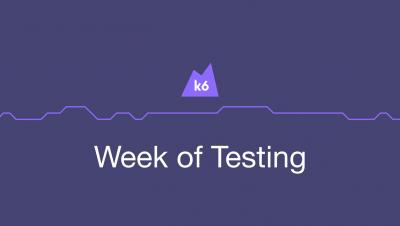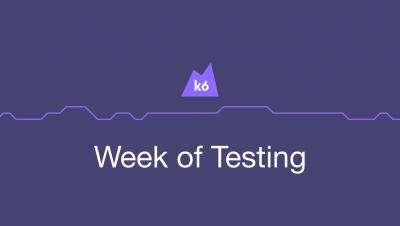Systems | Development | Analytics | API | Testing
k6
Week of Testing Day 2: Baseline tests and continuous testing
Week of Testing: How to run a load test on k6 (Test Builder)
Week of Testing, Day 1: What is K6? What is Load Impact? What is K6 Cloud?
Performance testing gRPC services
v0.29.0 contained a lot of interesting features. Have a look at the release notes for details! gRPC is a light-weight open-source RPC framework. It was originally developed by Google, with 1.0 being released in August 2016. Since then, it's gained a lot of attention as well as a wide adoption. In comparison to JSON, which is transmitted as human-readable text, gRPC is binary, making it both faster to transmit and more compact.
k6 v0.29.0 released
This release contains the work of over 10 contributors split over more than 100 commits. v0.29.0 contains a whole bunch of new, exciting features. We hope that you'll enjoy it as much as we do! Read the full release notes here.
Load Testing a Caddy Web Server on a GCP F1-Micro instance Using K6
I used the K6 load testing framework to benchmark the Compute Engine f1-micro and Caddy web server hosting this site. With CloudFlare caching turned off, the server was able to serve an onslaught 800 virtual users continuously reloading the page (while maintaining a median request duration of <400ms), but started dropping requests when increasing the load further. This is fine.
Load testing with GitLab
In this tutorial, we will look into how to integrate performance testing with k6 into your GitLab setup. By integrating performance tests into your CI pipelines, you can catch performance issues earlier and ship more stable and performant applications to production.
Load testing with CircleCI
In this tutorial, we will look into how to integrate k6 tests into CircleCI. By integrating performance tests into your CI pipelines, you can catch performance issues earlier and ship more stable and performant applications to production.
How to Load Test OAuth secured APIs with k6?
The outline of this article is as follows: Most systems are designed to treat users differently based on their identity. Therefore, users are authenticated via various mechanisms and it's often equally important to test the performance of anonymous and authenticated endpoints. One of the most widespread authentication standards used by today's applications is OAuth. In OAuth, we use a trusted third party to verify the identity of the user.











